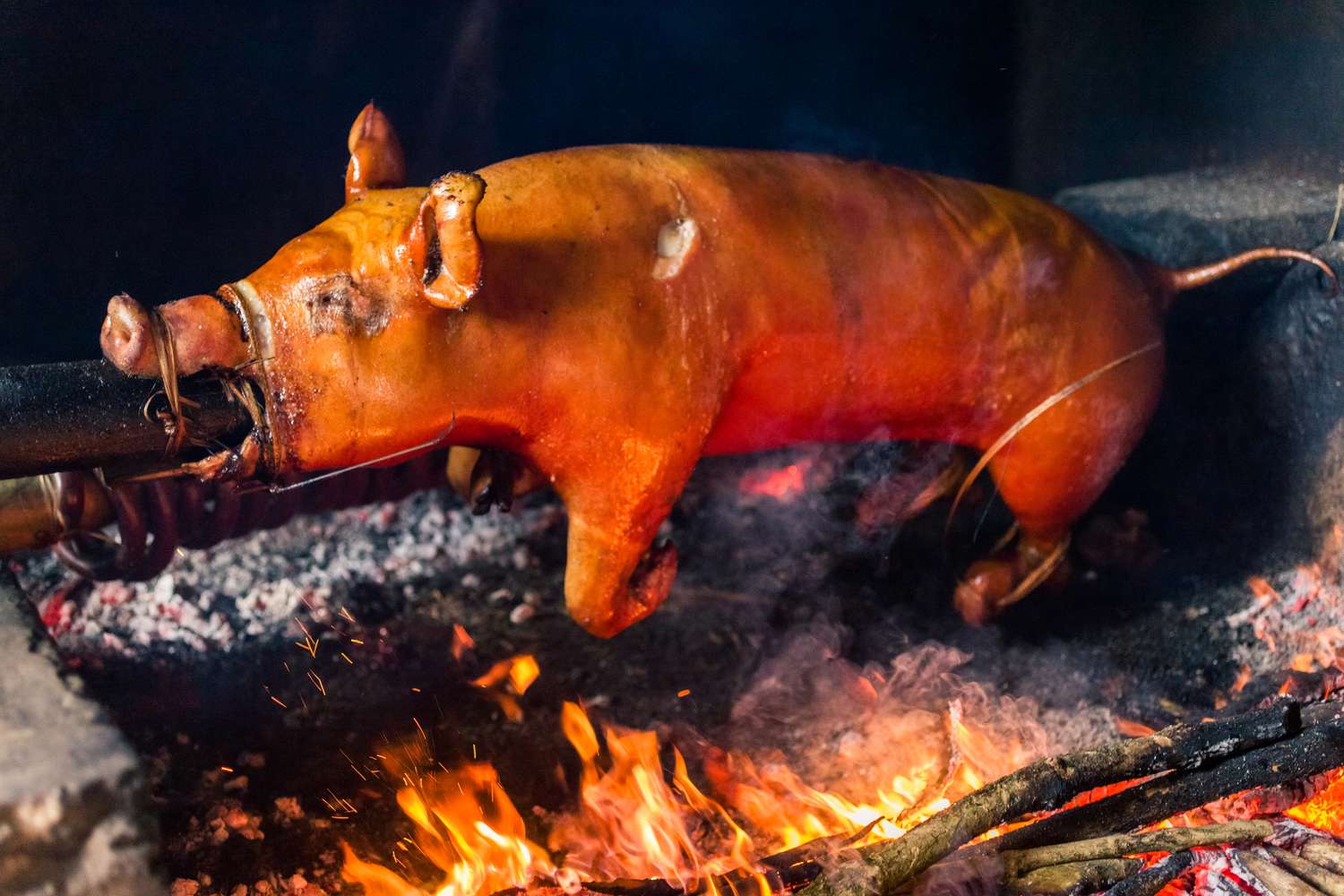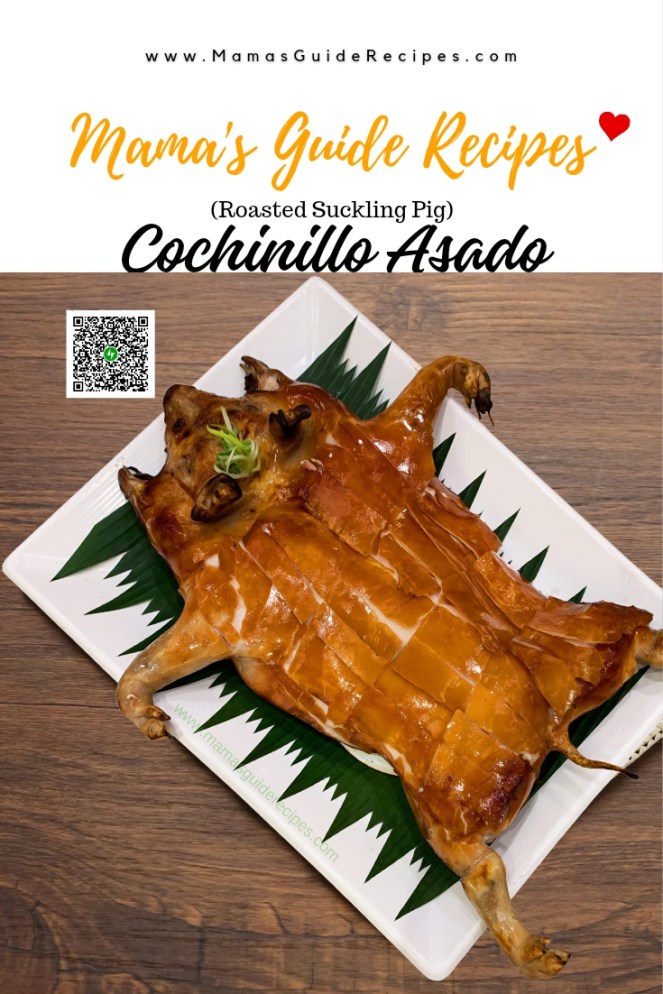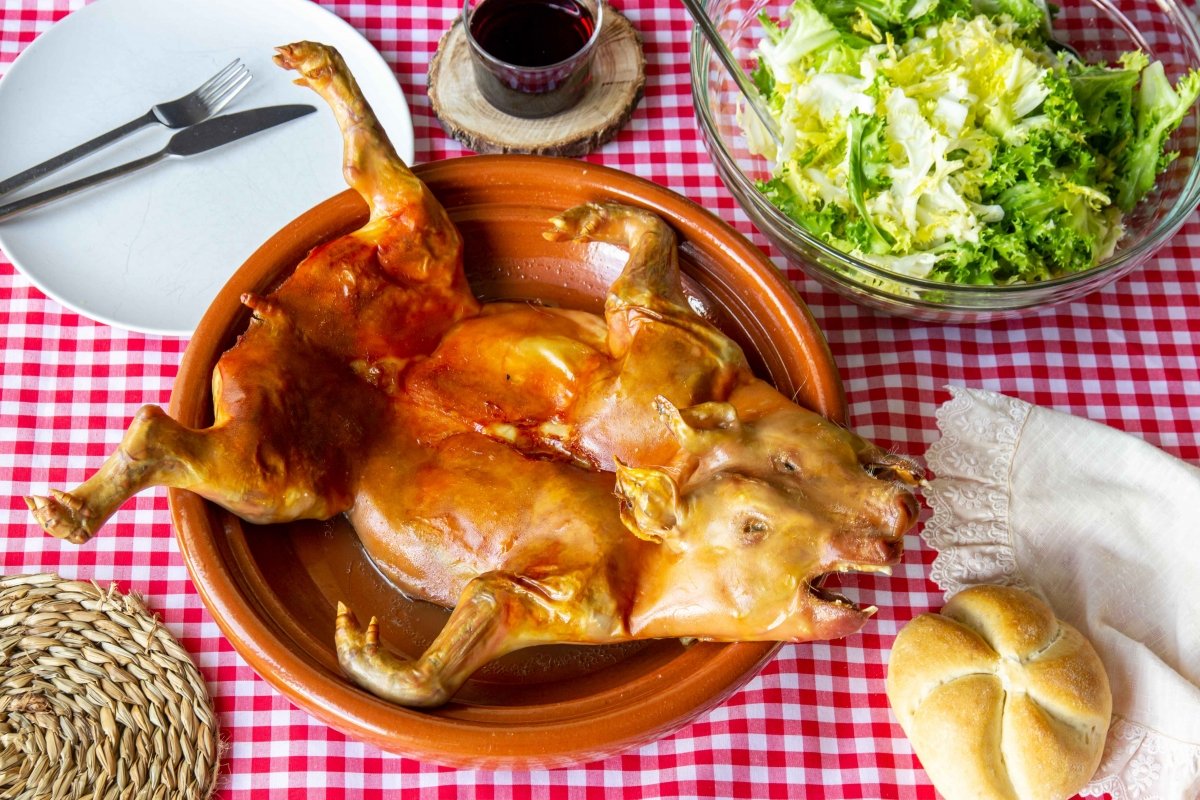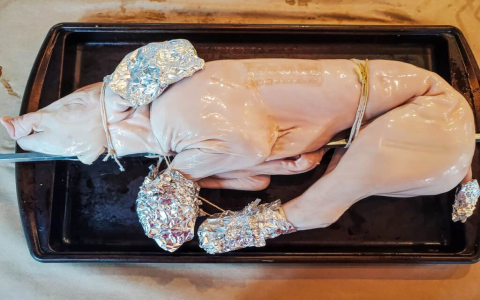Well, let me tell you about making a traditional cochinillo asado, or what folks call roast suckling pig. This dish, it’s famous over in Spain, especially in places like Segovia and Madrid, where they know how to roast up a piglet that’s tender on the inside, crisp on the outside. So, if you’re looking to whip up something special for a feast, this one will surely make folks sit up and take notice.

Ingredients are key here. You don’t need a lot of fancy stuff, but you do need the right ones, and some time and patience:
- A whole suckling pig (about 8-10 pounds)
- Salt and pepper, as much as your hand feels right to sprinkle
- Fresh thyme and bay leaves, for that earthy flavor
- Good olive oil – the kind that’s got a rich smell to it
- Some dabs of butter (a few spoonfuls here and there)
- A few cloves of garlic, chopped up
- Onions, sliced up nice and even
First off, you’ll need to get that pig prepped. Now, if you’re handy with a knife, you can butterfly the pig yourself. That just means opening it up a bit, from the underside, so it’ll cook evenly. But if you’re not so sure about doing that, don’t worry! Just ask your butcher to handle it. They know what to do.
Once you’ve got the pig ready, rub it down good with salt and pepper. Be generous! That’s where the flavor’s coming from. Then, tuck those bay leaves and thyme in around it, maybe even a few pieces inside if you can.
Next, you’ll want to preheat the oven to a hot 450°F. That’s right, we’re going high here because we want that skin to crisp up just right. Before you pop it in the oven, take some olive oil and rub it all over the piglet. Don’t be shy with it – you want every part to have a good coating. Then, place a few dabs of butter all around, especially on those leaner spots. Butter helps with browning and makes sure it doesn’t dry out.
Now, here’s a tip: wrap those little ears in foil. Otherwise, they’ll burn up before the rest of the piglet is done. Trust me on this one; nobody likes crunchy burnt ears!

Place your piglet in a large roasting pan, preferably one that’s open so it can cook evenly. Once in the oven, give it about 15 minutes at 450°F just to get that crisping started. Then, turn the heat down to about 375°F so it can cook through nice and slow. This usually takes about 2 to 3 hours, depending on the size of your pig. Now, don’t just forget about it! Every 30 minutes or so, baste the piglet with those pan drippings – that’s the juice gathering in the pan. This keeps it moist and helps with the flavor.
While it’s roasting, chop up some garlic and onions. About halfway through, you can sprinkle these around the pig in the pan. They’ll roast up nicely and give a delicious aroma, mixing with the pork juices and herbs. It smells heavenly, I tell you!
Now, when the pig is about done, the skin should be golden brown and crisp. You’ll know it’s ready when the meat is tender – it’ll start to pull away from the bone a bit. That’s when you know it’s going to be good eating. Pull it out of the oven and let it rest for a good 15 minutes before serving. This lets the juices settle, so every bite is as juicy as it can be.
Serve it up just as it is, with some of those roasted onions and garlic on the side. And there you have it – a cochinillo asado that’s fit for a feast. Simple ingredients, a little patience, and a whole lot of flavor. Enjoy!
Tags:[cochinillo asado, roast suckling pig recipe, Spanish roast piglet, cochinillo asado ingredients, traditional Spanish recipes]














